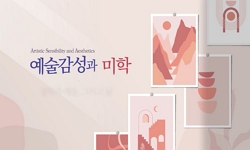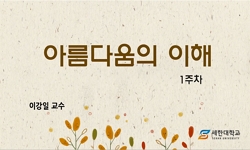This paper presents a reading of Jane Austen’s lesser-known early novella Lady Susan, examining the representation of widowhood as a critical foray into the modern discourse of female desire. Challenging the mainstream scholarship which emphasizes t...
http://chineseinput.net/에서 pinyin(병음)방식으로 중국어를 변환할 수 있습니다.
변환된 중국어를 복사하여 사용하시면 됩니다.
- 中文 을 입력하시려면 zhongwen을 입력하시고 space를누르시면됩니다.
- 北京 을 입력하시려면 beijing을 입력하시고 space를 누르시면 됩니다.
부가정보
다국어 초록 (Multilingual Abstract)
This paper presents a reading of Jane Austen’s lesser-known early novella Lady Susan, examining the representation of widowhood as a critical foray into the modern discourse of female desire. Challenging the mainstream scholarship which emphasizes the authorial verdict on the amorous escapade of the eponymous heroine in one way or another, I demonstrate that the novel creates a less judgmental, less moralizing and more tolerant, more exploratory space for signifying capacious female desire. My first argument is that Austen, by taking a defamilarizing look at the discourses of motherhood and sensibility, the two powerful cultural scripts for constructing the ideal of domestic femininity, illuminates the performative nature of both and the possibility of critique as well. Next, I interpret coquetry as a transgressive strategy of deferral of marriage, whereby the patriarchal gender relation in the regime of heteronormativity is called into question. The heroine’s conclusive marriage, I contend, is not a submissive sign but another performativity that enacts the potential female agency. Lastly, I revisit the implications of the narrative shift in the conclusion chapter of the novel. I argue that the appearance of omniscient narration does not intend to nullify the heroine’s struggle but rather clarifies the conditions, meanings, and limitations of her desire. Elaborating these three related arguments, this paper aims at placing Lady Susan in a continuum of widow-coquette, the complex figure who interrogates the parameters of domestic femininity, and thereby placing Lady Susan as worthy of a significant precursor to Austen’s canon in its insight into the dynamic link between shaping of modern female sexuality and the narrative of marriage plot.
참고문헌 (Reference)
1 Ford, Susan Allen, "‘No business with politics’: Writing the Sentimental Heroine in Desmond and Lady Susan" 26 (26): 2005
2 Kaplan, Deborah, "ane Austen Among Women" Johns Hopkins UP 155-181, 1992
3 Spacks, Patricia Meyer, "Writing the Female Voice: Essays in Epistolarity" Northeastern UP 63-76, 1989
4 Spencer, Jane, "The Rise of the Woman Novelist : From Aphra Behn to Jane Austen" Blackwell 1986
5 Poovey, Mary, "The Proper Lady and the Woman Writer: Ideology as Style in the Works of Mary Wollstonecraft, Mary Shelly, and Jane Austen" U of Chicago P 172-207, 1984
6 Staves, Susan, "The Past as Prologue: Essays to Celebrates the Twenty-fifth Anniversary for the American Society for Eighteenth-Century Studies" AMS 91-114, 1995
7 Gilbert, Sandra, "The Madwoman in the Attic: The Woman Writer and the Nineteenth-Century Literary Imagination" Yale UP 146-183, 1979
8 Galperin, William, "The Historical Austen" U of Pennsylvania P 109-137, 2003
9 Barker-Benfield, G. J, "The Culture of Sensibility : Sex and Society in Eighteenth-Century Britain" U of Chicago P 1992
10 Lanser, Susan, Snider, "Sapphic Picaresque, Sexual Difference and the Challenges of Homo-Adventuring" 15 (15): 251-268, 2001
1 Ford, Susan Allen, "‘No business with politics’: Writing the Sentimental Heroine in Desmond and Lady Susan" 26 (26): 2005
2 Kaplan, Deborah, "ane Austen Among Women" Johns Hopkins UP 155-181, 1992
3 Spacks, Patricia Meyer, "Writing the Female Voice: Essays in Epistolarity" Northeastern UP 63-76, 1989
4 Spencer, Jane, "The Rise of the Woman Novelist : From Aphra Behn to Jane Austen" Blackwell 1986
5 Poovey, Mary, "The Proper Lady and the Woman Writer: Ideology as Style in the Works of Mary Wollstonecraft, Mary Shelly, and Jane Austen" U of Chicago P 172-207, 1984
6 Staves, Susan, "The Past as Prologue: Essays to Celebrates the Twenty-fifth Anniversary for the American Society for Eighteenth-Century Studies" AMS 91-114, 1995
7 Gilbert, Sandra, "The Madwoman in the Attic: The Woman Writer and the Nineteenth-Century Literary Imagination" Yale UP 146-183, 1979
8 Galperin, William, "The Historical Austen" U of Pennsylvania P 109-137, 2003
9 Barker-Benfield, G. J, "The Culture of Sensibility : Sex and Society in Eighteenth-Century Britain" U of Chicago P 1992
10 Lanser, Susan, Snider, "Sapphic Picaresque, Sexual Difference and the Challenges of Homo-Adventuring" 15 (15): 251-268, 2001
11 Favret, Mary, "Romantic Correspondence: Women, Politics and the Fiction of Letters" Cambridge UP 133-175, 1993
12 King, Shelley, "Refiguring the Coquette: Essays on Culture and Coquetry. Ed. Shelley King and Yaël Schlick" Bucknell UP 13-35, 2008
13 Jones, Chris, "Radical Sensibility : Literature and Ideas in the 1790s" Routledge 1993
14 Braunschneider, Teresa, "Our Coquettes : Capacious Desire in the Eighteenth Century" U of Virginia P 2009
15 Castle, Terry, "Northanger Abbey, Lady Susan, The Watsons, Sandition" Oxford UP 8-32, 1990
16 Gevirtz, Karen Bloom, "Life after Death: Widows and the English Novel, Defoe to Austen" U of Delaware P 137-168, 2005
17 Todd, Janet, "Later Manuscripts" Cambridge UP 31-129, 2008
18 Horwitz, Barbara, "Lady Susan: The Wicked Mother in Jane Austen’s Novels" 9 : 84-88, 1987
19 Brodie, Laura Fairchild, "Jane Austen’s Treatment of Widowhood" 34 (34): 697-718, 1994
20 Gard, Roger, "Jane Austen’s Novels: The Art of Clarity" Yale UP 25-44, 1992
21 Southam, B. C, "Jane Austen’s Literary Manuscripts : A Study of the Novelist’s Development through the Surviving Papers" Oxford UP 1964
22 Steiner, Enit Karafili, "Jane Austen’s Civilized Women: Morality, Gender and the Civilizing Process" Pickering & Chatto 47-70, 2012
23 Levine, Jay Arnold, "Jane Austen’s Character of the Merry Widow" 1 : 23-34, 1961
24 MacDonagh, Oliver, "Jane Austen: Real and Imagined Worlds" Yale UP 20-50, 1991
25 Mudrick, Marvin, "Jane Austen: Irony as Defense and Discovery" Princeton UP 127-145, 1952
26 Litz, Walton, "Jane Austen: A Study of Her Artistic Development" Oxford UP 3-57, 1965
27 Butler, Marilyn, "Jane Austen and the War of Ideas" Clarendon 88-123, 1974
28 Brown, Lloyd, "Jane Austen and the Feminist Tradition" 28 (28): 321-338, 1973
29 Smith, LeRoy W., "Jane Austen and the Drama of Woman" St Martin’s 46-68, 1983
30 Wallace, Tara Ghoshal, "Jane Austen and Narrative Authority" St. Martin’s 1-16, 1994
31 Johnson, Claudia, "Jane Austen : Women, Politics, and the Novel" U of Chicago P 1988
32 Kaye. Richard, "Flirt’s Tragedy : Desire Without End in Victorian and Edwardian Fiction" U of Virginia P 2002
33 Lanser, Susan, Snider, "Fictions of Authority: Women Writers and Narrative Voice" Cornell UP 61-119, 1992
34 Johnson, Claudia, "Equivocal Beings : Politics, Gender, and Sentimentality in the 1790s, Wollstonecraft, Radcliffe, Burney, Austen" U of Chicago P 1995
35 Bersani, Leo, "A Future for Astyanax: Character and Desire in Literature" Little, Brown 51-88, 1976
동일학술지(권/호) 다른 논문
-
- 한국18세기영문학회
- 김순원 ( Soon Won Kim )
- 2015
- KCI등재
-
- 한국18세기영문학회
- 민자영 ( Jayoung Min )
- 2015
- KCI등재
-
것을 얻는 남자: 아프라 벤의 「방랑자」에 형상화된 가부장 사회의 위력
- 한국18세기영문학회
- 전인한 ( In Han Jeon )
- 2015
- KCI등재
-
Widowhood, Coquetry, and Desire in Jane Austen`s Lady Susan
- 한국18세기영문학회
- ( Sonjeong Cho )
- 2015
- KCI등재
분석정보
인용정보 인용지수 설명보기
학술지 이력
| 연월일 | 이력구분 | 이력상세 | 등재구분 |
|---|---|---|---|
| 2026 | 평가예정 | 재인증평가 신청대상 (재인증) | |
| 2020-01-01 | 평가 | 등재학술지 유지 (재인증) |  |
| 2017-01-01 | 평가 | 등재학술지 유지 (계속평가) |  |
| 2013-01-01 | 평가 | 등재학술지 유지 (등재유지) |  |
| 2010-01-01 | 평가 | 등재학술지 선정 (등재후보2차) |  |
| 2009-01-01 | 평가 | 등재후보 1차 PASS (등재후보1차) |  |
| 2007-01-01 | 평가 | 등재후보학술지 선정 (신규평가) |  |
학술지 인용정보
| 기준연도 | WOS-KCI 통합IF(2년) | KCIF(2년) | KCIF(3년) |
|---|---|---|---|
| 2016 | 0.25 | 0.25 | 0.24 |
| KCIF(4년) | KCIF(5년) | 중심성지수(3년) | 즉시성지수 |
| 0.21 | 0.17 | 0.877 | 0 |




 KCI
KCI




